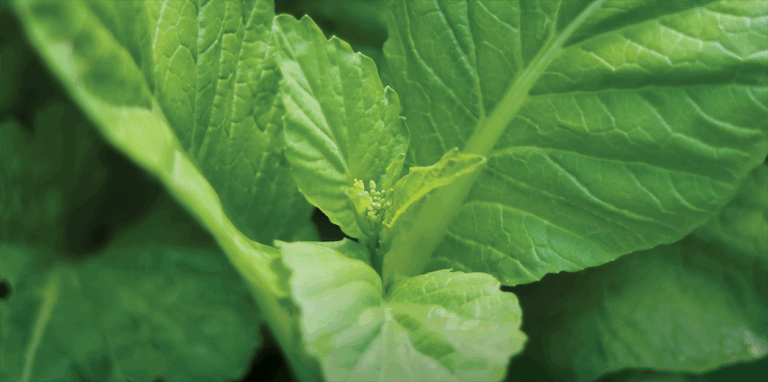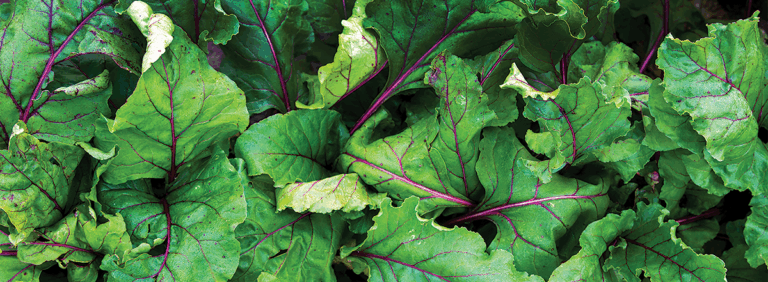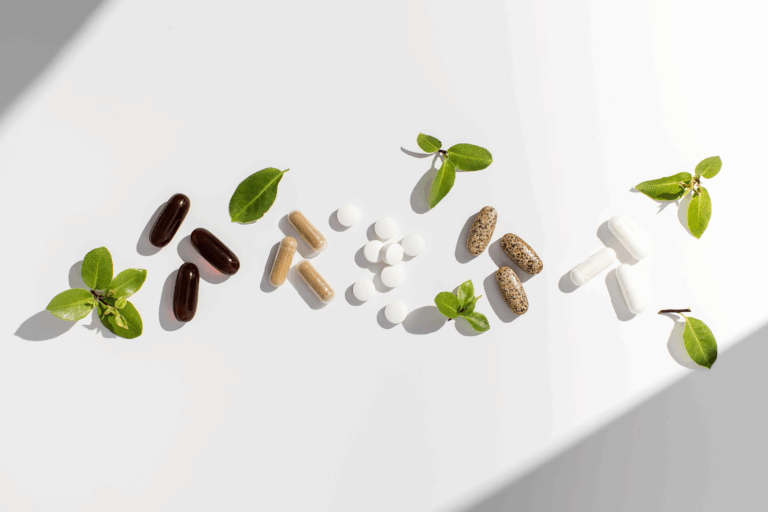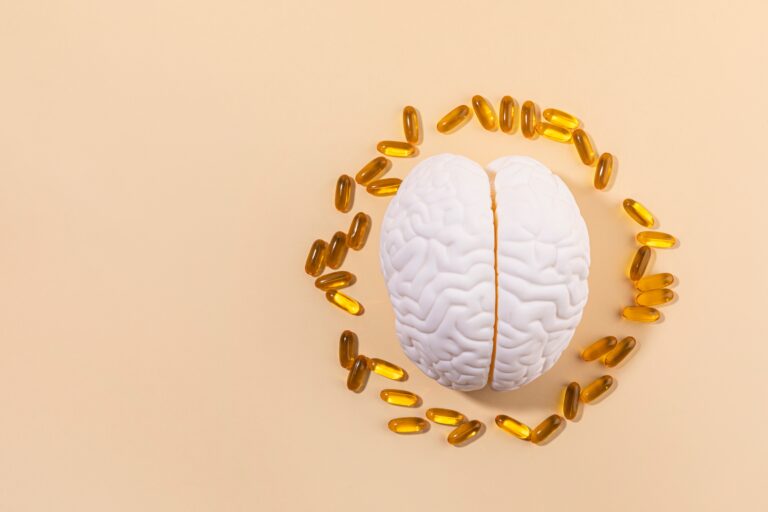Andrographis: A Bitter and Powerful Herb
Andrographis: A Bitter and Powerful Herb
Historical Use of Andrographis Paniculata
Andrographis (Andrographis paniculata), an annual flowering herb, belongs to the Acanthaceae family and is widely found in Southern and Southeastern Asia.1,2 It is commonly referred to as “king of the bitters” due to its extremely bitter taste.1 Historically, it was used as a part of ancient oriental and ayurvedic medicine.3 In traditional Chinese medicine, it is considered a cold-property herb, working to rid the body of heat and fever.3
The Andrographis plant, alone or in combination with other medicinal plants, was used throughout history for a variety of ailments including:1-5
- Respiratory tract infections including colds
- Gonorrhea, herpes, and hepatitis
- Boils, skin eruptions and infections, and leprosy
- Chronic and seasonal fevers and cough
- Irregular bowel habits, loss of appetite, dyspepsia, peptic ulcer, and stomachaches
- Jaundice and liver complaints
- Snake bites and poisonous insect stings
- Dysentery, malaria, and helminthiasis
- Cardiovascular diseases and hypertriglyceridemia
The whole plant and its components exert a variety of beneficial effects at the cellular and tissue levels:1,3,5
- Anti-microbial
- Cytotoxic
- Anti-protozoan
- Anti-inflammatory
- Antioxidant
- Immunostimulatory
- Anti-diabetic
- Anti-infective
- Anti-angiogenic
- Anti-malarial
- Anti-fibrosis
- Anti-hyperlipidemic
- Anti-viral
- Anti-fungal
- Anti-cancer
- Cardioprotective
- Hepato-renal protective
- Hormone modulatory
Typically, the parts of the Andrographis plant are used separately, including the aerial parts and roots, and can be used as a powder, infusion, or decoction.1,3 Extracts can be made from acetone, chloroform, ethanol, hexane, methanolic, or aqueous extracts and possess different properties depending on their composition.1 The extracts often differ in the levels of andrographolide, the primary bioactive component of Andrographis, and therefore possess different pharmacological properties.1
Andrographis also contains therapeutically active secondary metabolites including lactones, diterpenes, flavonoids, quinic acid, xanthones, and noriridoids.1,3 Of the hundreds of secondary metabolites that have been discovered, approximately 80 displayed pharmacological activities.1,4 Andrographis also contains many trace minerals and macrominerals including chromium, manganese, copper, nickel, zinc, cobalt, selenium, potassium, and calcium.1,3
Health Benefits of Andrographis Paniculata
Randomized, double-blind, placebo-controlled trials, the gold standard of scientific studies, have demonstrated the efficacy of extracts from Andrographis on infectious diseases.1 This herb has potent anti-viral activity against many viruses including dengue virus, herpes simplex virus type one, influenza A, HIV, hepatitis B, and hepatitis C.1 Specifically, the bioactive compounds andrographolide and 14-deoxy-11,12-didehydroandrographolide exhibit anti-HIV properties, although to a far lesser extent than standard HIV pharmaceutical treatments.1 Both the aqueous and ethanol extract of Andrographis also exhibit anti-microbial properties, with the ethanol extract of aerial parts inhibiting growth of both gram-positive and gram-negative bacteria.1
Andrographis also possesses anti-infectious activity against influenza and uncomplicated upper respiratory tract infections including the common cold, rhinitis, pharyngitis (sore throat), and pharyngotonsillitis (inflammation of the pharynx and tonsils).1 Pills from the whole powdered plant and tablets of the water extract of Andrographis have cure rates of 88 and 61 percent, respectively.1 It was also able to prevent common colds, with the incidence reduced by nearly 50 percent compared to the placebo group and reduced the intensity of symptoms of tiredness, sleeplessness, sore throat, and nasal secretions.1,3 Similarly, a daily regimen of Andrographis extract from dried leaves was as effective as acetaminophen as a treatment for patients with symptoms of pharyngotonsillitis.1
The infection-fighting effect of Andrographis is due to several mechanisms of action, including regulating host immunity through antibody and cytokine production, inhibiting DNA synthesis and therefore RNA and protein synthesis, affecting the quorum sensing system which is used between bacteria to communicate, and inhibiting the production of biofilms produced by bacteria.1 Additionally, metabolites from Andrographis may work synergistically with standard antibiotics to inhibit biofilm formation where standard antibiotics alone could not inhibit formation.1
Andrographis may also influence blood pressure and hypertension by inhibiting the activity of β-adrenoceptors and angiotensin converting enzyme (ACE), a central regulator of blood pressure.2 The chloroform extract of Andrographis activates nitric oxide synthesis and stimulates production in endothelial cells.2 This causes smooth muscle cells to relax through inhibition of acetylcholine which decreases blood pressure. It also decreases levels of reactive oxygen species which helps maintain vascular health.2 Other clinical trials found beneficial effects related to semen quality and fertility, arthritis pain, hypertriglyceridemia, fatigue, and type 2 diabetes.1
Andrographolide
Andrographis contains many bioactive ingredients, including andrographolide, which is the most prominent by occurrence and quantity and found in high amounts in Andrographis leaves.6 The major biological properties of andrographolide include anti-cancer, anti-viral, anti-inflammatory, anti-bacterial, and anti-hyperglycemic effects.4 Other bioactive components of Andrographis exhibit similar effects to andrographolide and likely contribute to beneficial effects.
Inflammation
Andrographolide possesses strong antioxidant and acute anti-inflammatory properties through its ability to target major signaling pathways and transcription factors, including NF-κB, and modulate Nrf2 signaling pathways.4,6 The anti-inflammatory mechanisms also contribute to the antioxidant effects including reducing the expression of several proinflammatory genes, including COX2, and inhibiting the production of reactive oxygen species.3,4,6
Cancer
In addition to possessing anti-inflammatory properties which may help protect against cancer development, andrographolide also exhibits specific anti-cancer activity.6 It has been shown to reduce proliferation in human breast cancer cells and suppress angiogenesis in the tumor microenvironment.6 It can also interact with HIF-1 which controls metabolic reprogramming in cancer cells — and therefore may interfere with cancer cell metabolism.6 Possible mechanisms of action include affecting angiogenesis, metastasis, cell cycle regulation, apoptosis, and cancer signaling pathways.4 Andrographolide may also enhance tumor sensitivity to radiation and chemotherapy.4
Infections
Andrographolide contributes to the strong anti-infection effect of Andrographis, although the precise mechanism may vary depending on the type of infection. Andrographolide can inhibit biofilm formation by interfering with the quorum sensing system in bacteria, obstruct the production of virulence factors, and regulate immune reactions to infections.4 It can also lower bacterial adhesion and damage the cytoskeleton of bacteria.4
Metabolic health
As it relates to type 2 diabetes, both Andrographis and andrographolide demonstrate an inhibitory effect on alpha-glucosidase, an enzyme located in the brush border of the small intestines that breaks down starch and other sugars such as disaccharides into glucose.6 This results in less glucose being absorbed and available to the body, similar to the mechanism of several approved drugs for the treatment of type 2 diabetes.6 Andrographolide also exerts positive effects on multiple metabolic pathways including decreasing cellular lipid accumulation, improving lipid metabolism, and improving glucose utilization in animals fed a high fat diet.6 It reduced insulin resistance in adipocytes through suppressing inflammatory pathways and is able to target several signaling pathways related to inflammation, glucose metabolism, and other metabolic-related diseases.6
Andrographolide as a therapeutic option
Because relatively high doses of Andrographis are required in order to observe beneficial effects, administering a smaller dose of a more concentrated form of the most potent ingredient may help increase tolerance and efficiency. However, isolating andrographolide for use as a pharmaceutical agent is limited by its poor selectivity and low solubility.4 Andrographolide is considered highly promiscuous, meaning it could have several off-target effects, and may interact with cellular targets in a cell type specific manner.1 Andrographolide is also quickly metabolized and removed from the body, resulting in relatively low bioavailability.1
Challenges and Safety Considerations
Comparing results between studies can be challenging because protocols utilize different Andrographis extracts and may combine Andrographis with other medicinal plants.1 The quantity and quality of phytonutrients in Andrographis can also vary due to geography and time of harvesting as well as the part of the plant that is used.1,5 However, research on Andrographis continues to demonstrate many beneficial effects and confirm its role as a safe, natural product.3,5 In a large study, mild adverse effects were reported in less than three percent of the study population and included vomiting, nose bleeds, hives, and diarrhea.1 A dose of Andrographis from 300 to 1800 mg/day and of andrographolide from five to 140 mg/day were found to be safe and well-tolerated in humans.5 It is considered generally non-toxic when taken orally; however, it is important to consider the risk of hypoglycemia with any herb or compound that can potentially reduce blood glucose levels.5
Andrographis paniculata may provide benefits for a wide variety of ailments. For some conditions it may be as effective as current recommended therapeutics. However, for other illnesses, it may be better suited as a complementary therapy. Much of the world still relies heavily on medicinal plants and herbs to meet healthcare needs and Andrographis remains a versatile, potent option due to the presence of many bioactive compounds.
- Hossain, S., Urbi, Z., Karuniawati, H., Mohiuddin, R.B., Qrimida, A.M., Allzrag, A.M.M., Ming, L.C., Pagano, E., Capasso, R. (2021). Andrographis paniculata (Burm. f.) Wall. ex Nees: An Updated Review of Phytochemistry, Antimicrobial Pharmacology, and Clinical Safety and Efficacy. Life (Basel), 11(4):348-386.
- Verma, T., Sinha, M., Bansal, N., Yadav, S.R., Shah, K., Chauhan, N.S. (2021). Plants Used as Antihypertensive. Nat Prod Bioprospect, 11(2):155-184.
- Okhuarobo, A., Falodun, J.E., Erharuyi, O., Imieje, V., Falodun, A., Langer, P. (2014). Harnessing the medicinal properties of Andrographis paniculata for diseases and beyond: a review of its phytochemistry and pharmacology. Asian Pac J Trop Dis, 4(3):213-222.
- Vetvicka, V., Vannucci, L. (2021). Biological properties of andrographolide, an active ingredient in Andrographis Paniculata: a narrative review. Ann Transl Med, 9(14):1186-1196.
- Wong, S.K., Chin, K., Ima-Nirwana, S. (2021). A review on the molecular basis underlying the protective effects of Andrographis paniculata and andrographolide against myocardial injury. Drug Des Devel Ther, 15:4615-4632.
- Burgos, R.A., Alarcón, P., Quiroga, J., Manosalva, C., Hancke, J. (2020). Andrographolide, an Anti-Inflammatory Multitarget Drug: All Roads Lead to Cellular Metabolism. Molecules, 26(1):5-21.







